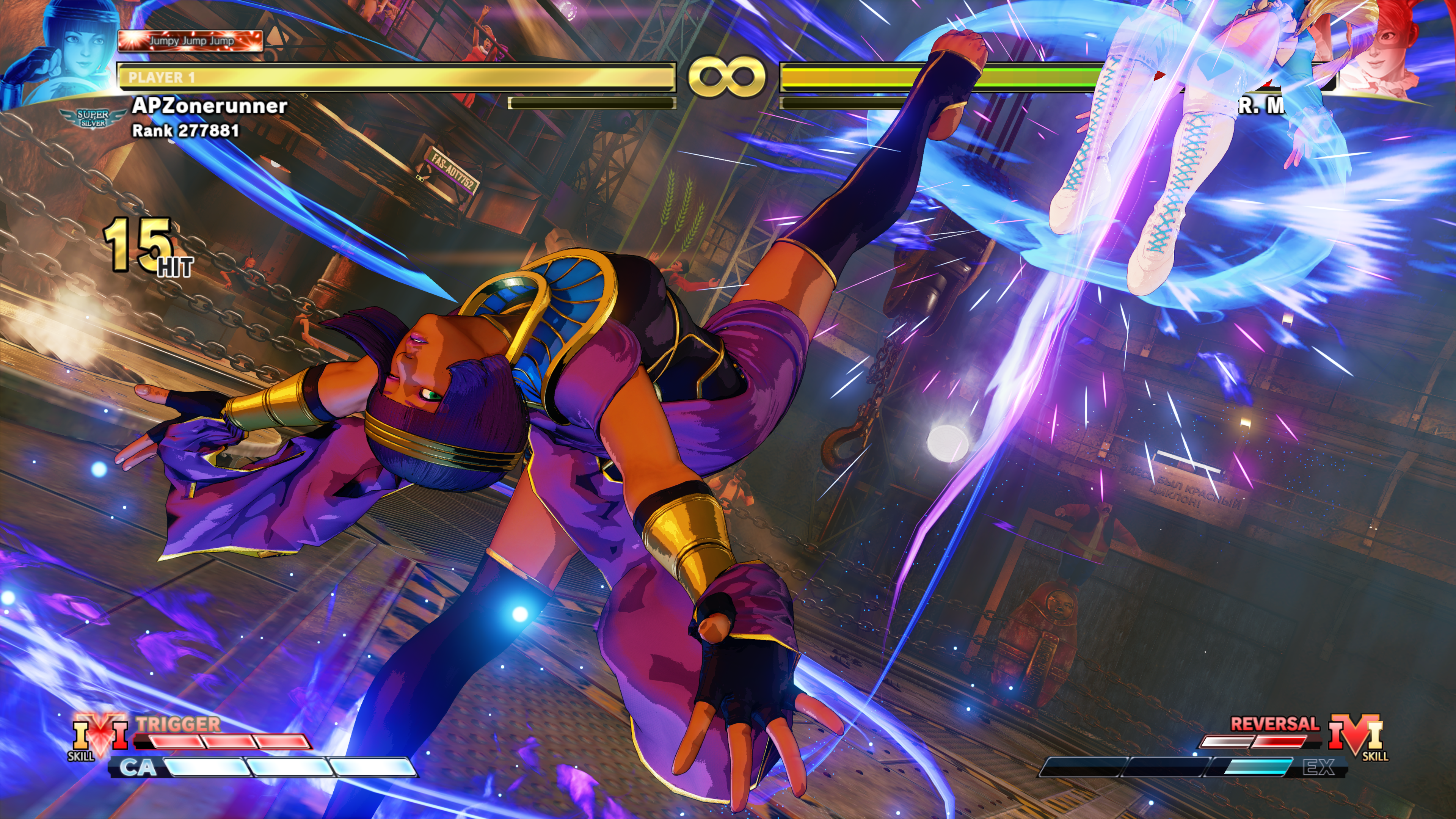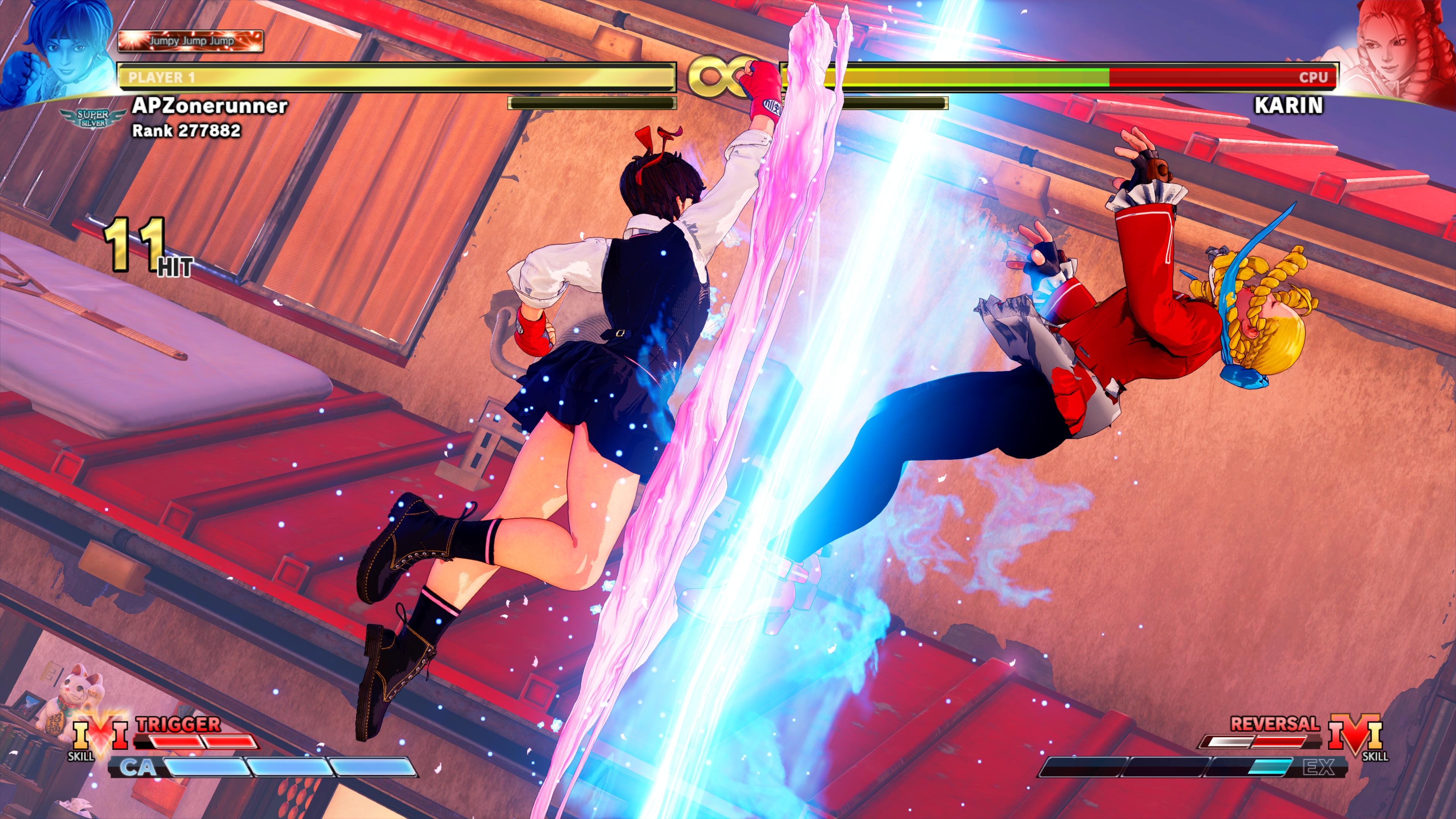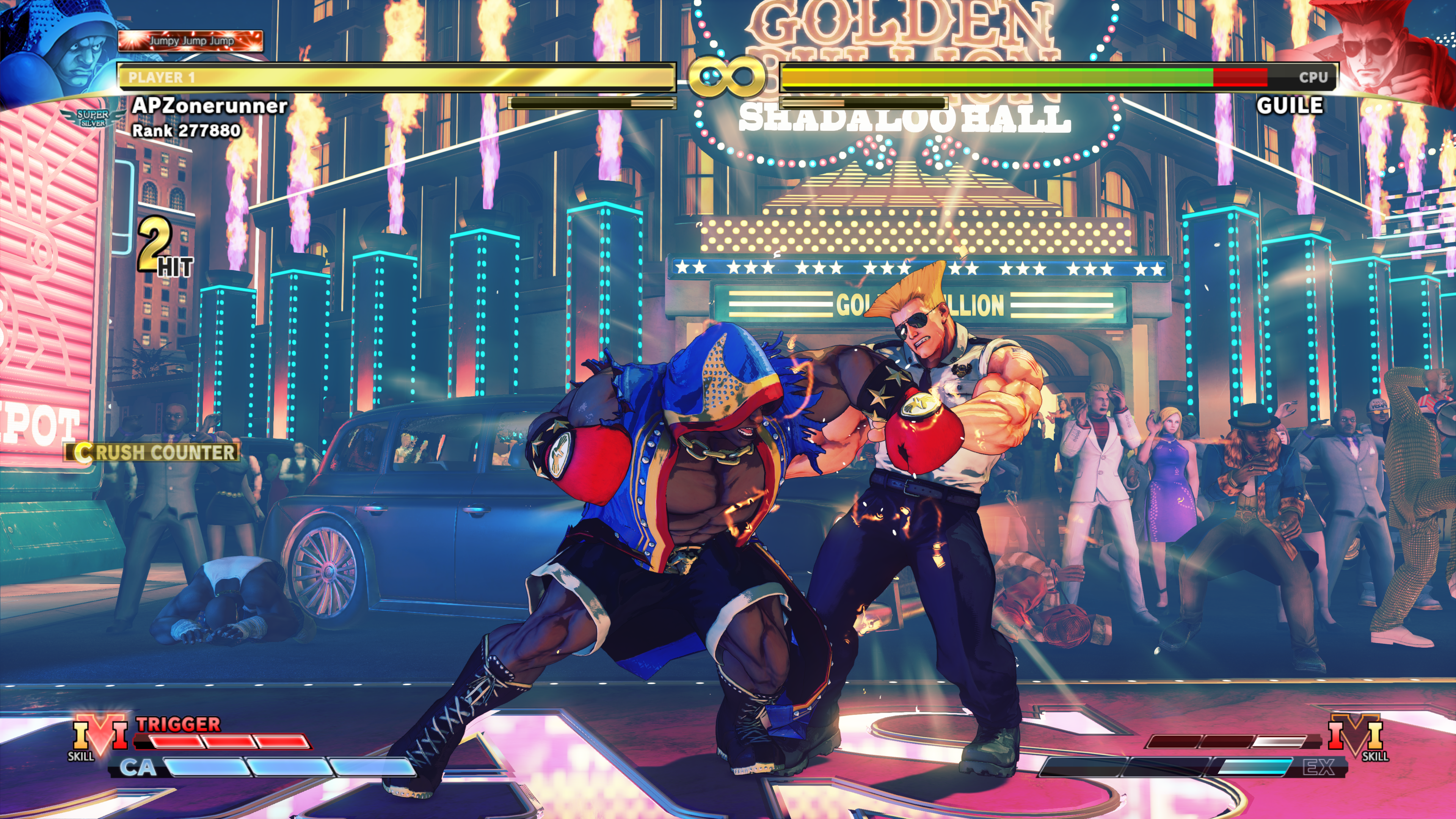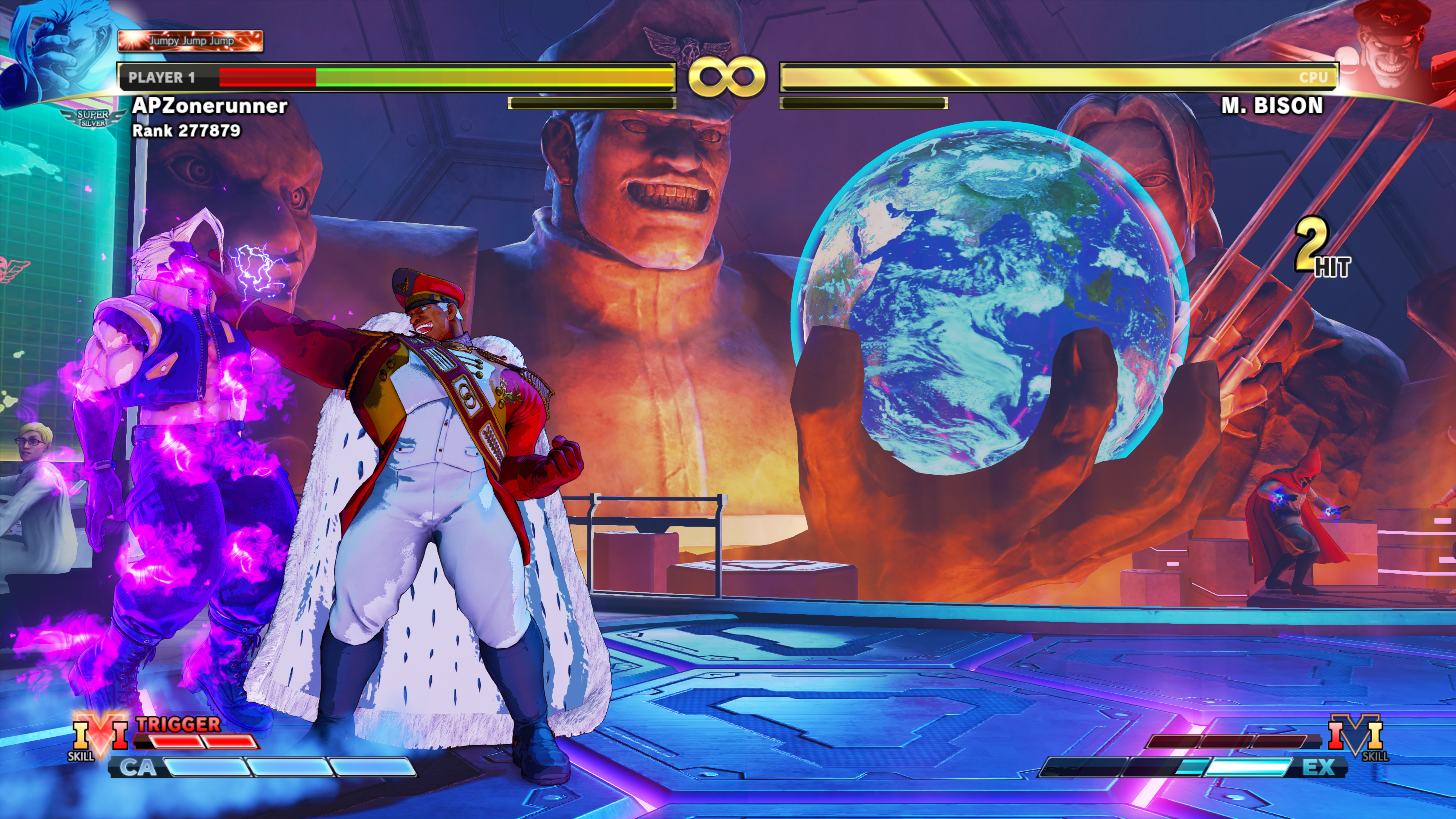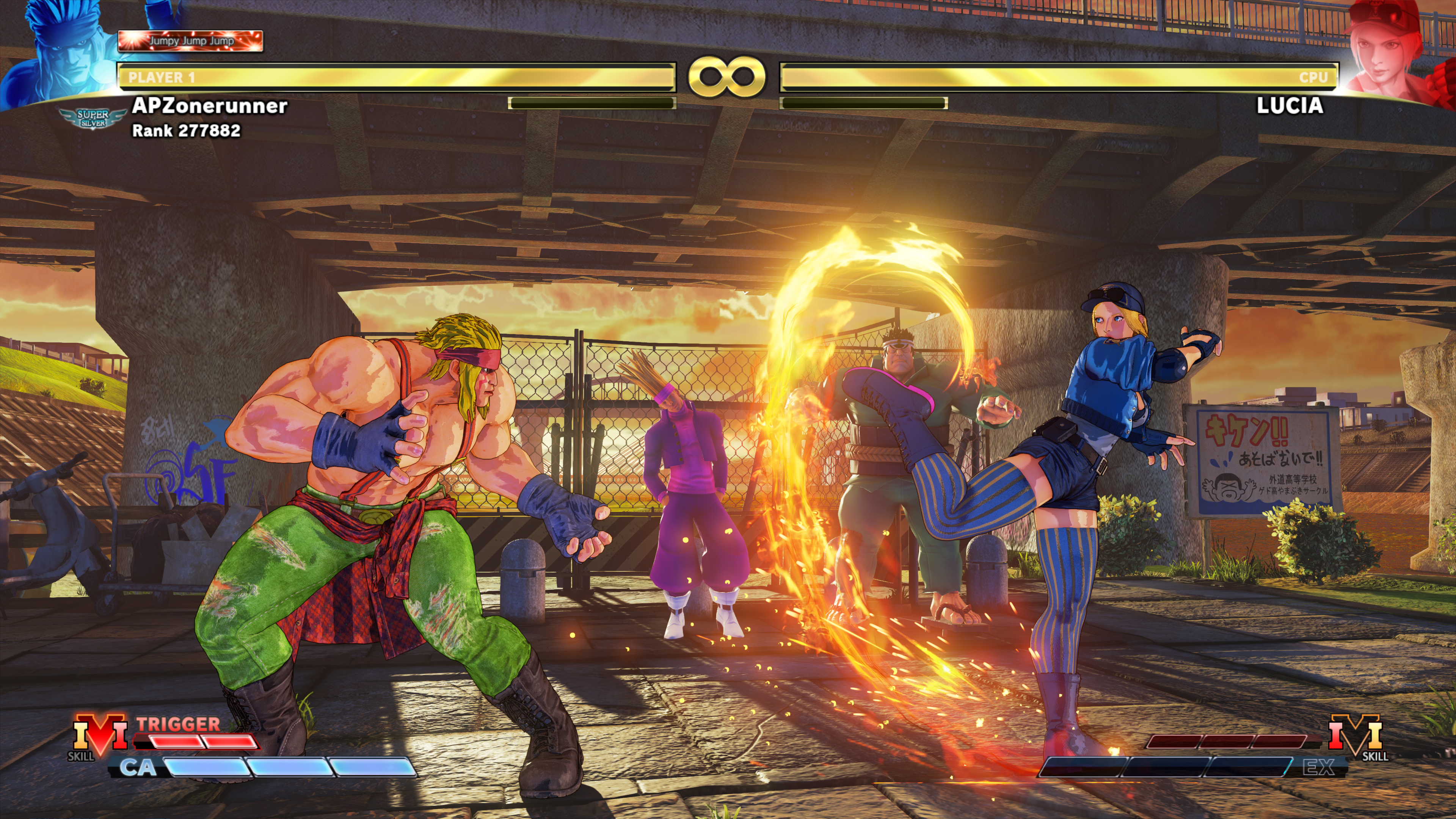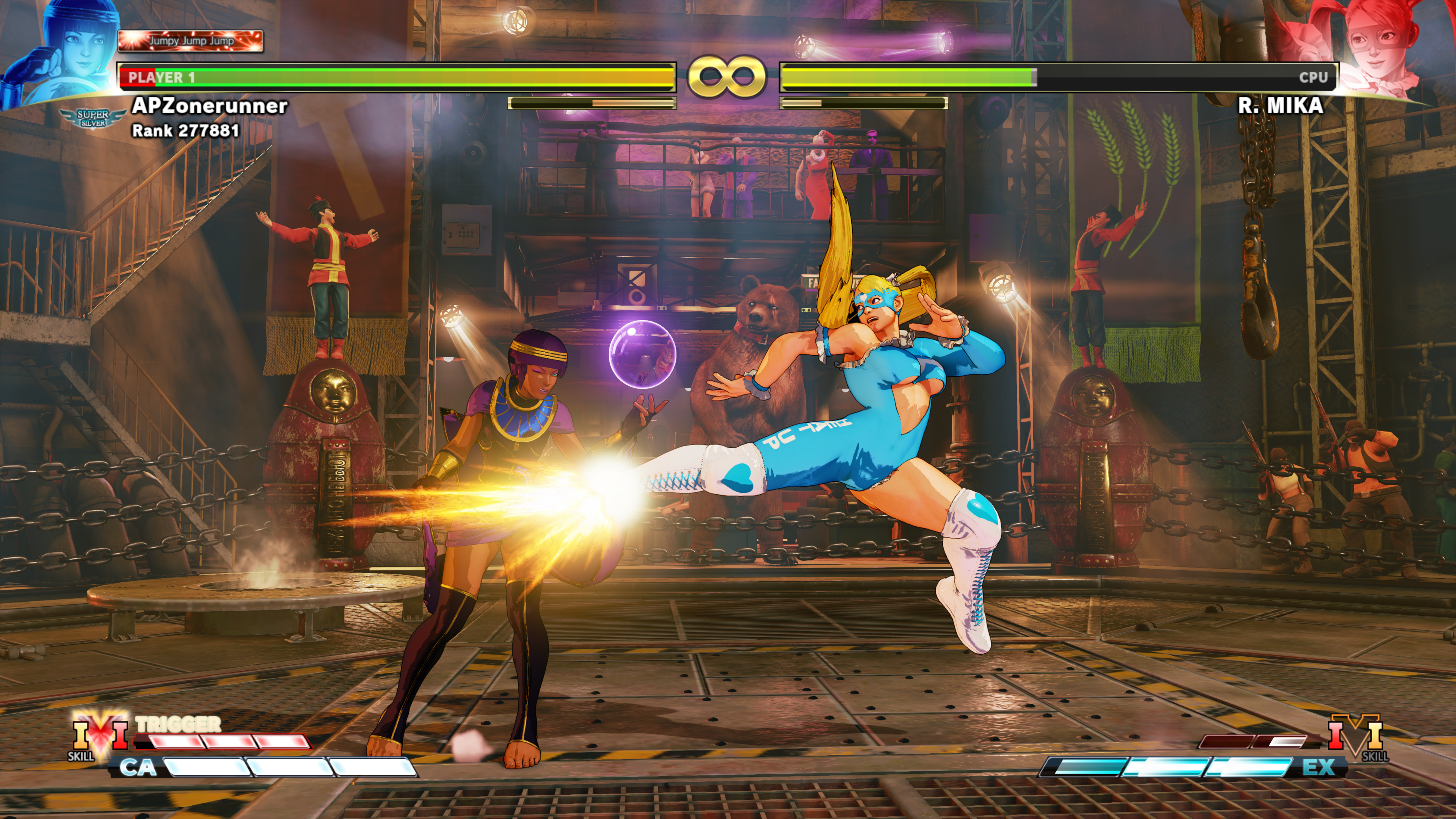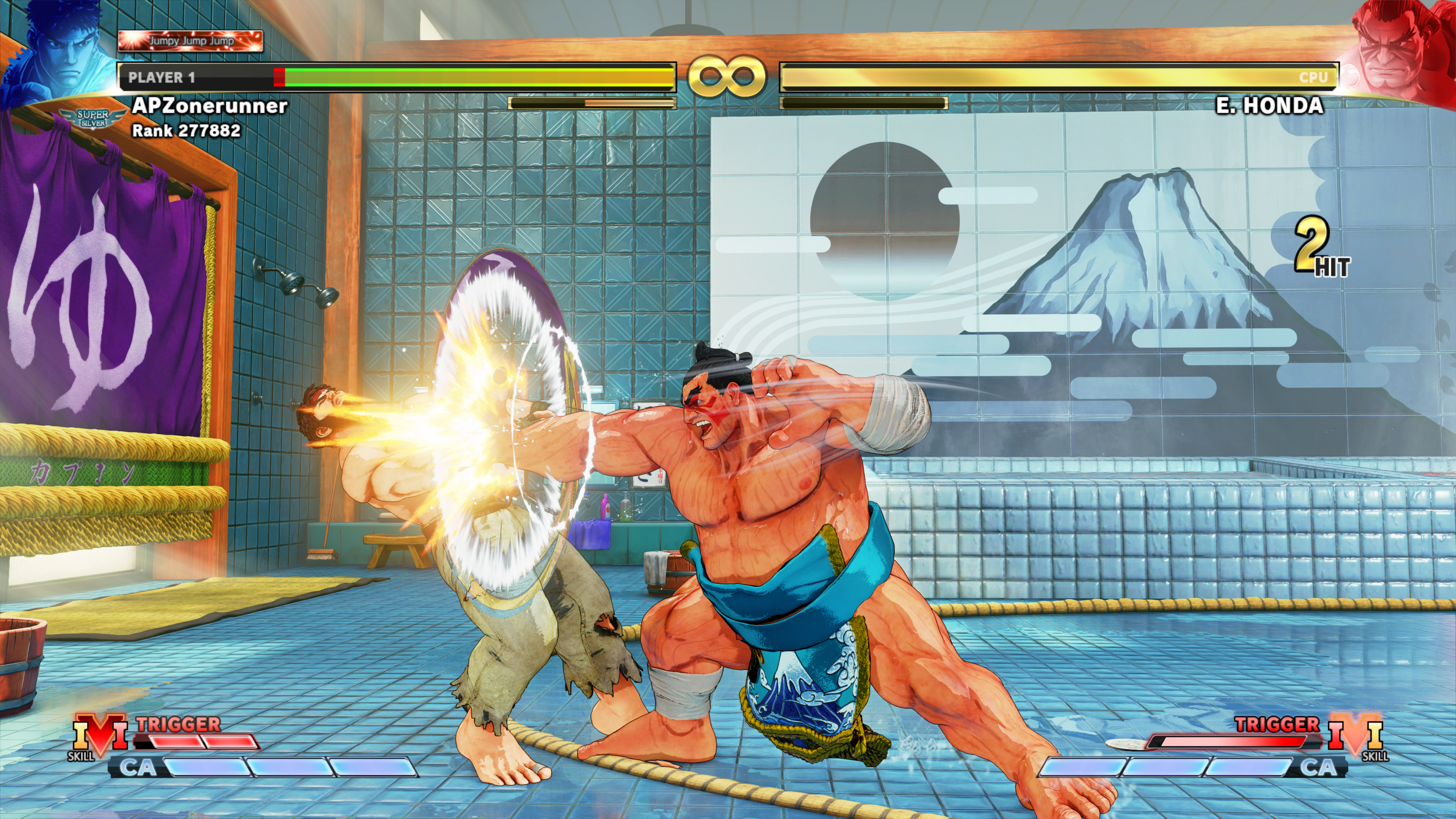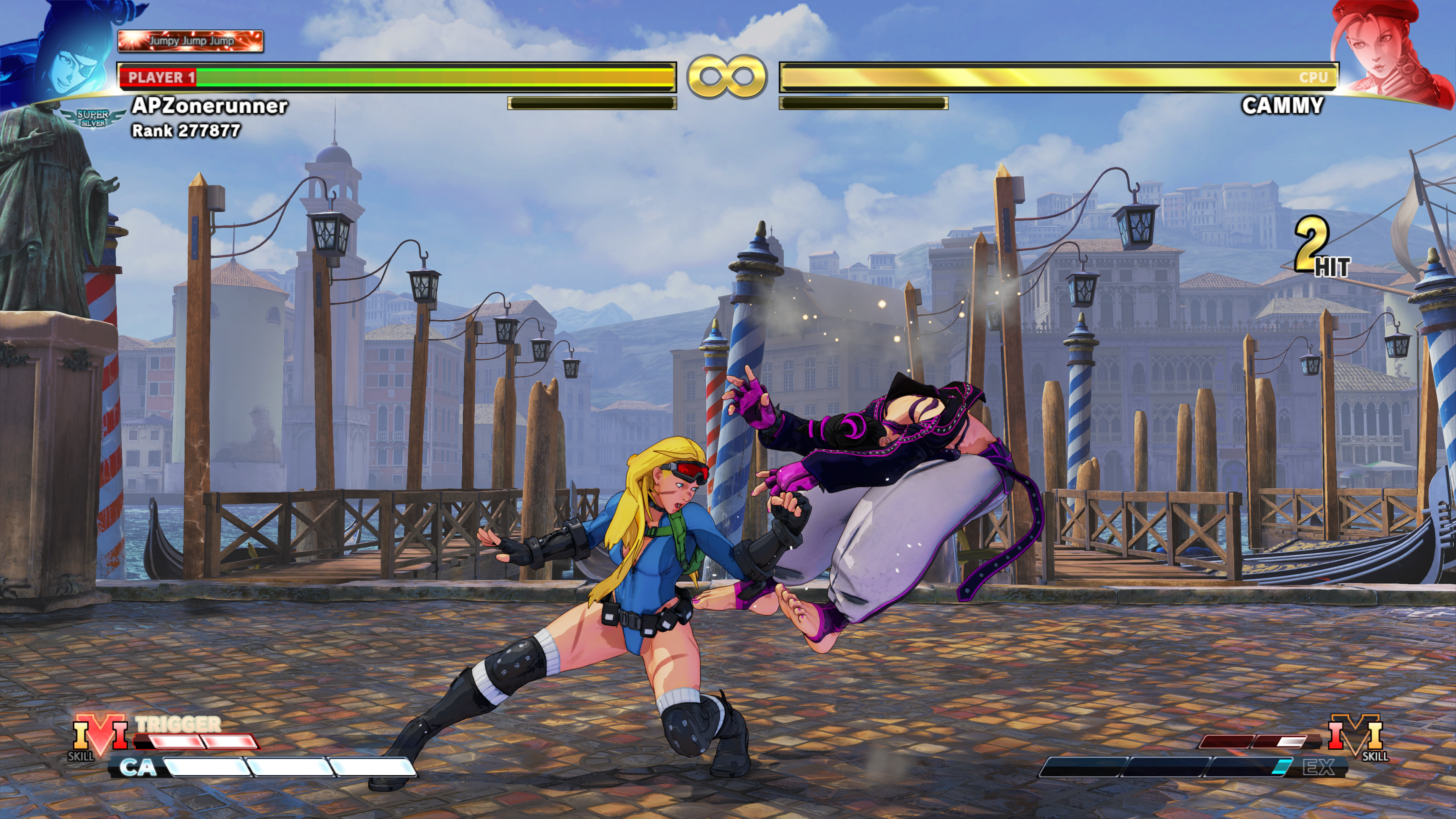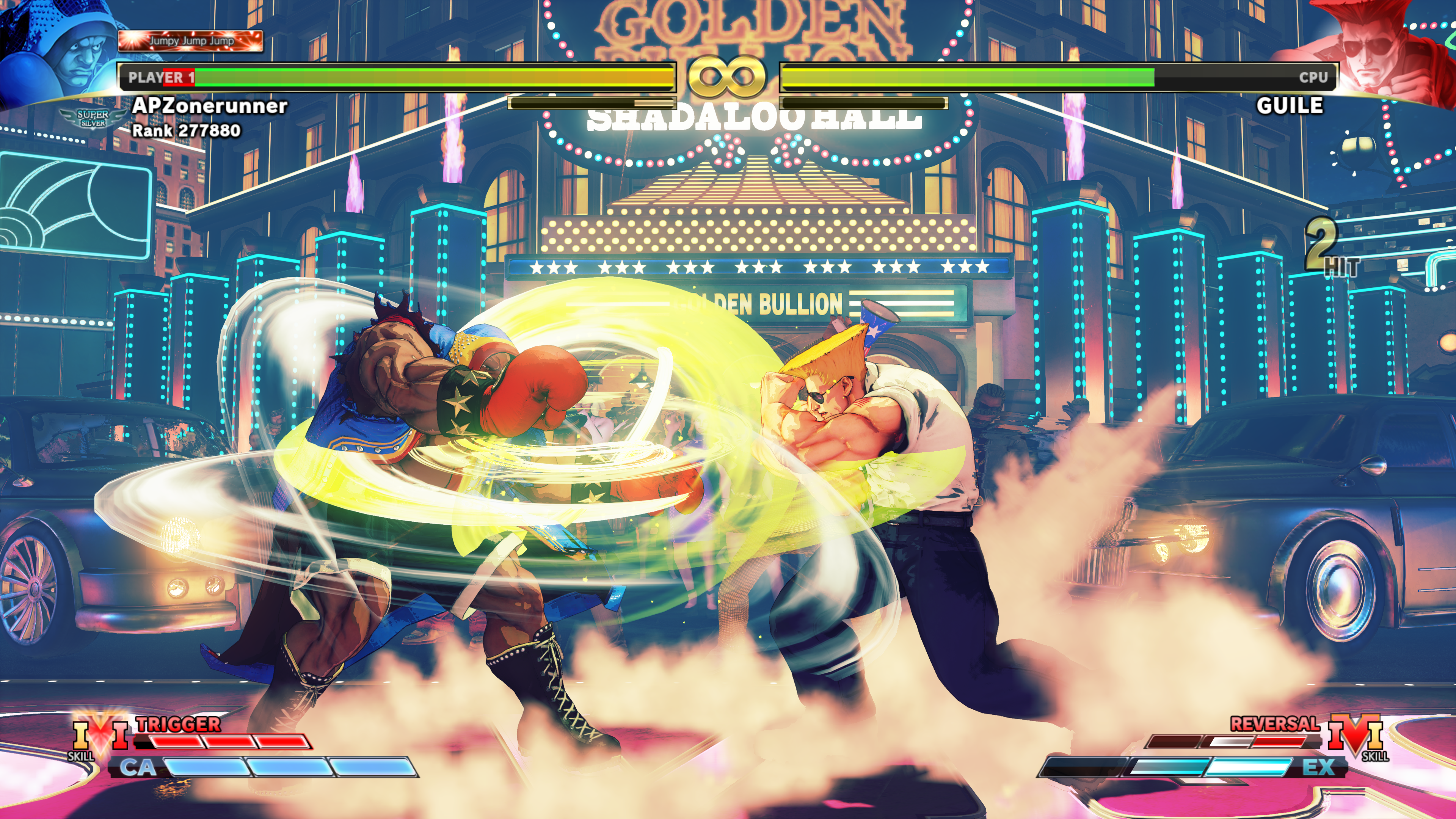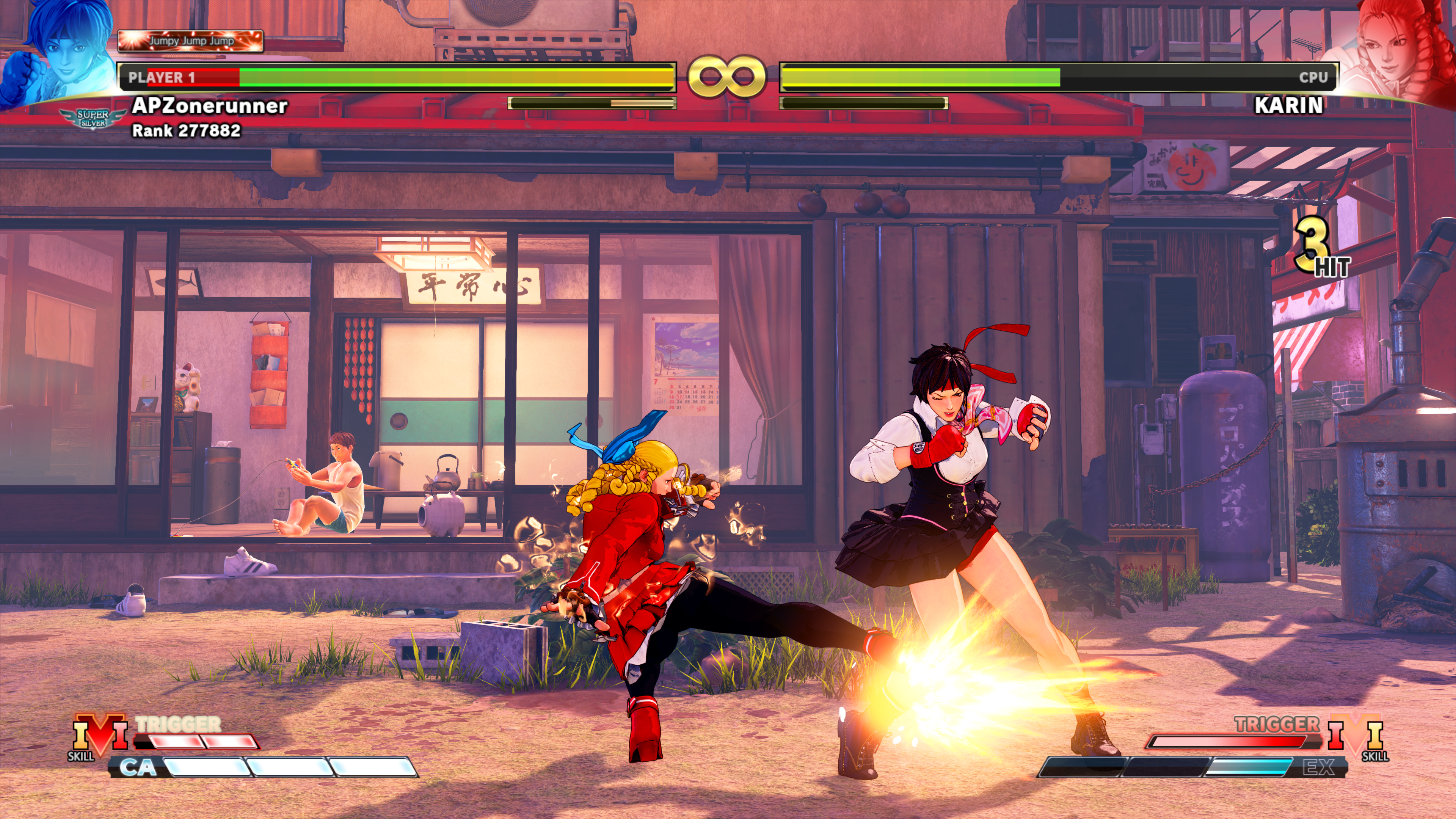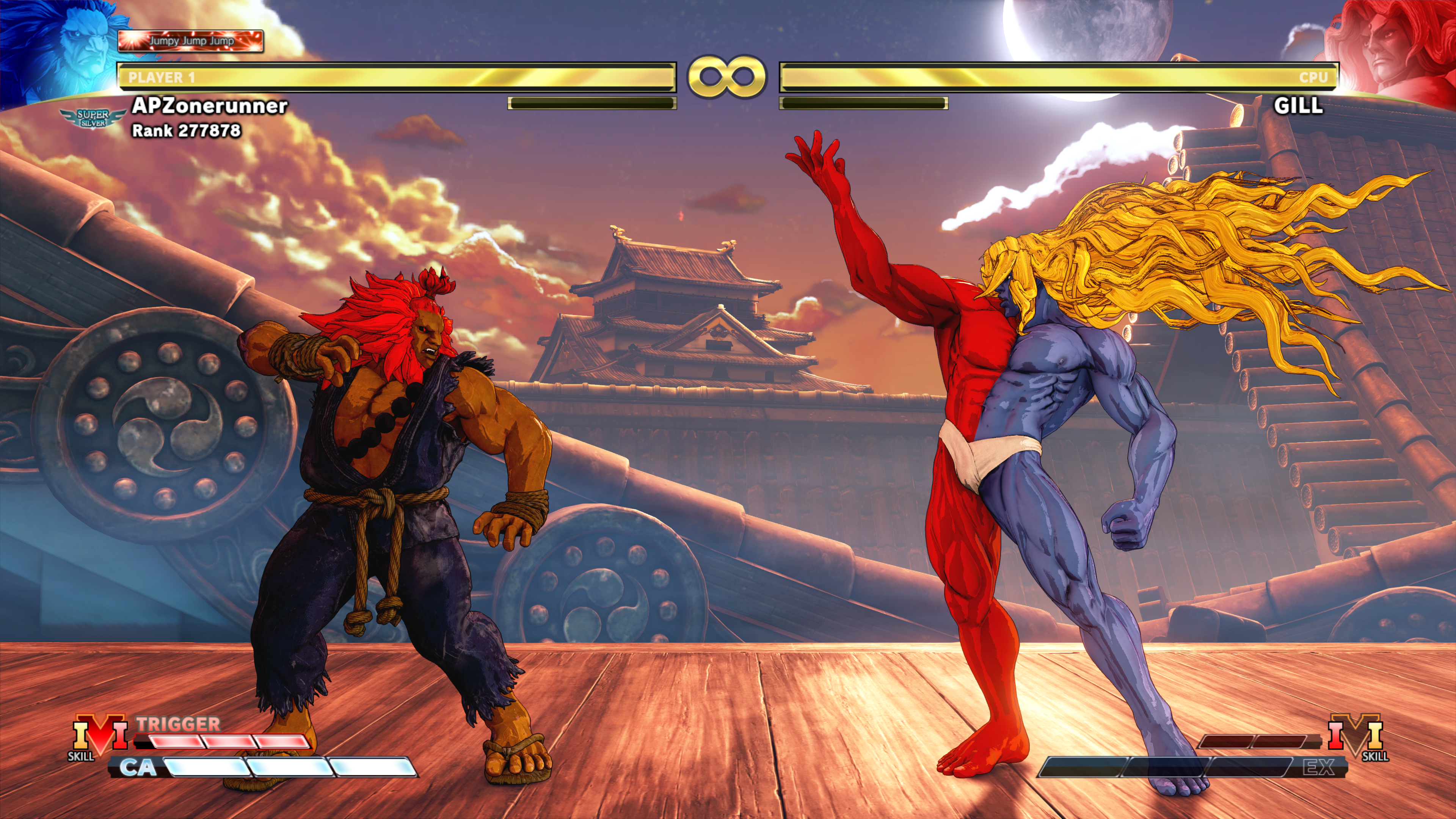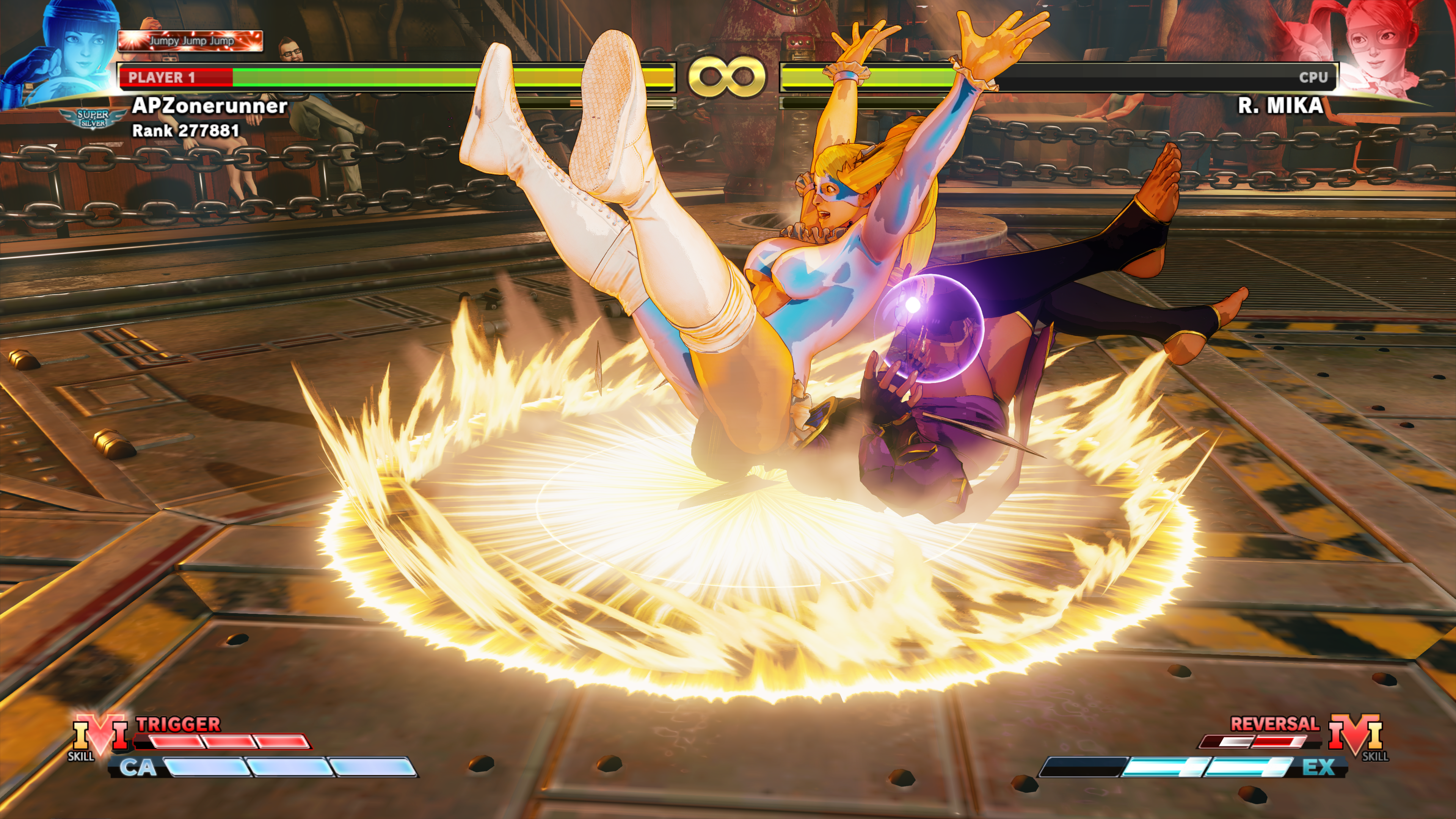That means nerfed combos are back, all-new techniques are implemented, and the game balance has generally been shaken up enormously; the patch notes are 79 pages long. But among the adjustments made by this so-called definitive patch there’s a surprising new addition – an extra graphics mode toggle. Specifically, two new graphics modes have been added. First off, there’s a ‘pixel filter’, which when applied goes a way to make SF5’s 3D graphics vaguely resemble those of Street Fighter 2 and 3. This is a neat little nostalgia hook and though it’s not exactly pretty, I can see the novelty of using it – especially in arcade mode, where you can play through remade versions of the arcade ladder progression from the 2D era SF titles. The more interesting of the two, however, is a new ‘cel shading’ feature. And… I actually think this looks better than the game normally does? Everything just pops. At first, on the character select screen where they’re very up-close and personal, I thought it looked a little rough. But in-game, in motion? Wow, it works. Here’s an image of it I took while noodling around in training mode: Now, to be clear, I’m one of these people who has always rather loved Street Fighter 5’s visual style. The stages have always let it down, running in a reduced frame rate with a sometimes noticeably worse level of detail, but the character models, animations, and attack effects are generally wonderful. It’s also a tad uneven; in the launch cast there’s a few characters who look notably lower-rent (shout outs to banana-head Ken), but many of those first few character models are gorgeous, and practically every character added in DLC – which is now two thirds of the game’s total cast – are all magnificent, lavished with attention. There’s lots of lovely visual flair many people won’t even notice, like post-attack wind-down animations that only play out if you don’t press another input after an attack animation finishes. People who say SF4 looks better than SF5 truly baffle me, even though Ultra Street Fighter 4 is undoubtedly a better game than Street Fighter 5 Champion Edition by some margin. Now both games are finished, we can comfortably declare that to be a fact – but also, SF5 is the better looking of the two. Anyway, the crispness of the cel-shading mode really enhances the look of SF5 in moment-to-moment gameplay, and I definitely think this is going to be how I play this game going forwards. I’ll spend today’s lunch hour installing this update and flicking the settings to cel-shaded on my arcade cabinets that run SF5. The only shame is that, for some reason, these modes are only available in offline mode. I get this for the pixel mode, which in some way can seriously obscure the player’s view, but I don’t get it for cel-shading, which feels functionally identical to the regular art just with some subtle differences. Liking the cel shading is a matter of preference – but if you do prefer it, you can’t use it online. That doesn’t bother me too much. My SF5 online days are behind me; I’ll return to the online battlefield in SF6. But I am an outlier; not many people have the same arcade cabinet SF5 runs on over in the Japanese arcades in their office. So perhaps Capcom should consider issuing one more mini-patch to enable cel shading offline. Regardless, though, what I do know is this: the definitive update for SF5 is a great final word from Capcom. SF5 is a great game. It took too long to get there, and suffered some nasty bumps in the road. But if the attitude displayed over the last few years of this game are indicative of what the company will attempt with Street Fighter 6, I couldn’t be more excited – even if its art is never, ever going to fit cel-shading. Perhaps that’s the coolest thing of all – in its final update SF5 did something that the next iteration won’t be able to do, what with its more realistic RE Engine visuals. SF5 stands apart, and as it comes to a close, it’s a worthy entry in the series. It also, now, looks better than it ever has. A fitting end.

